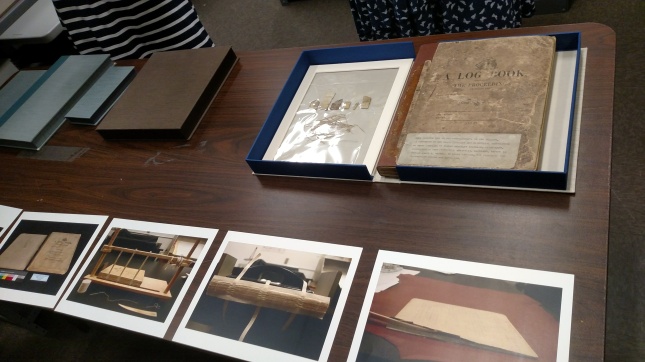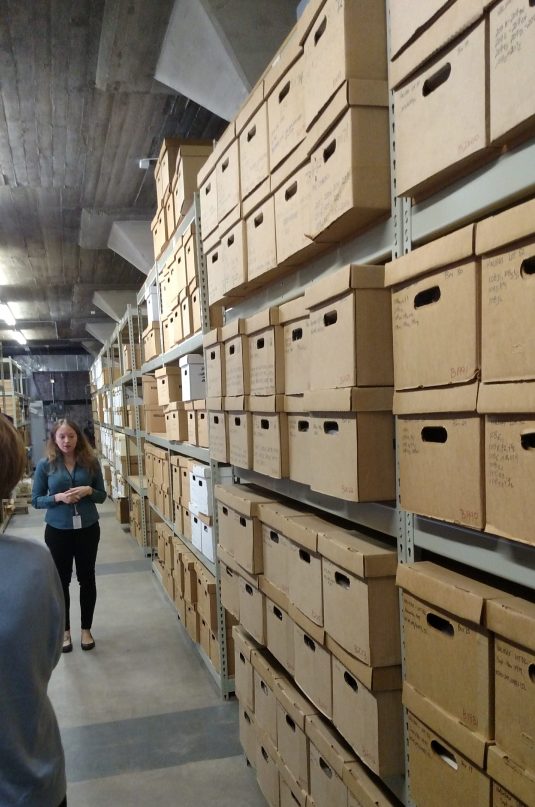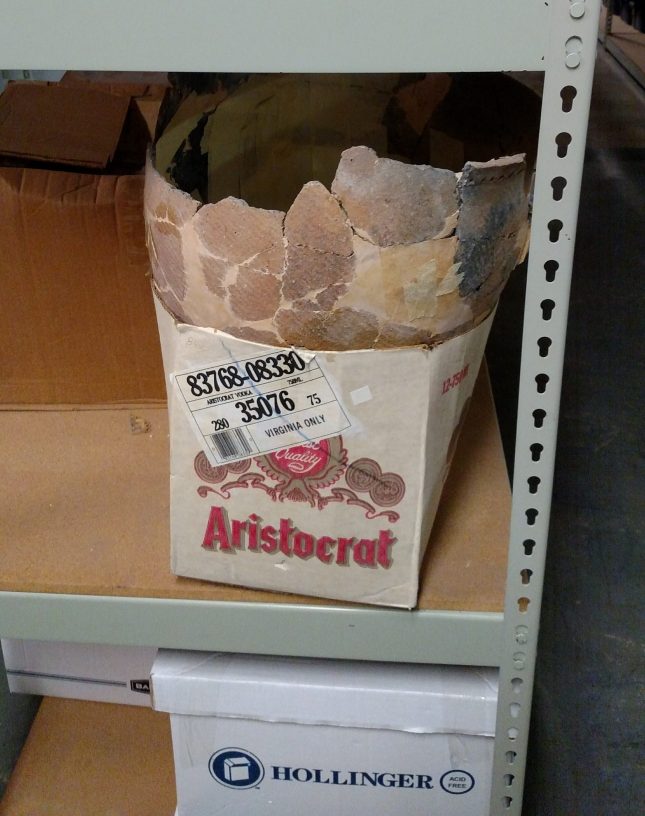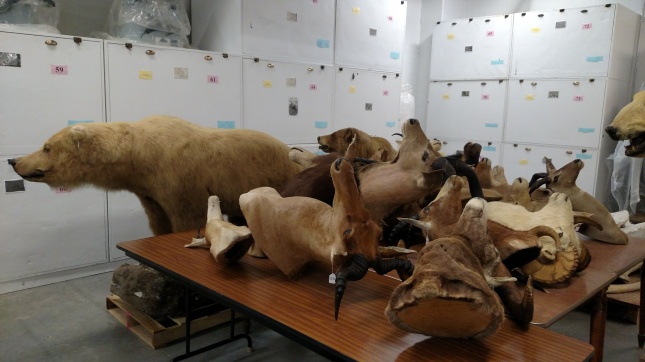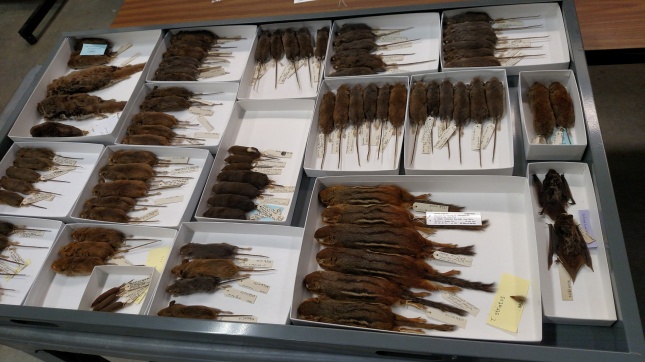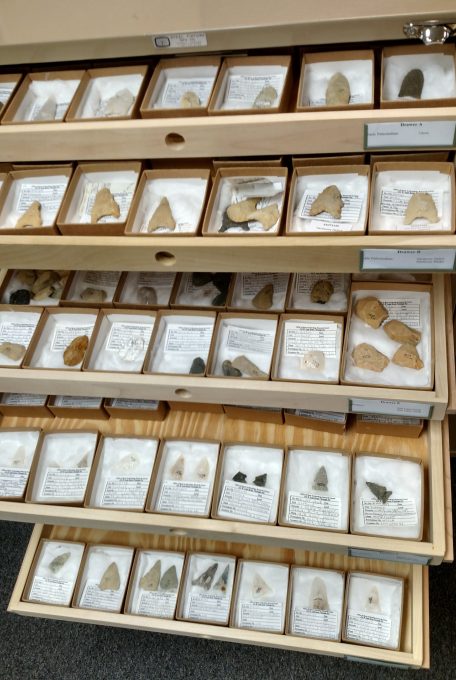
A wide variety of projectile points from a well documented private collection that was donated to the OSARC that includes the iconic 13,000 year old Clovis points at the top.
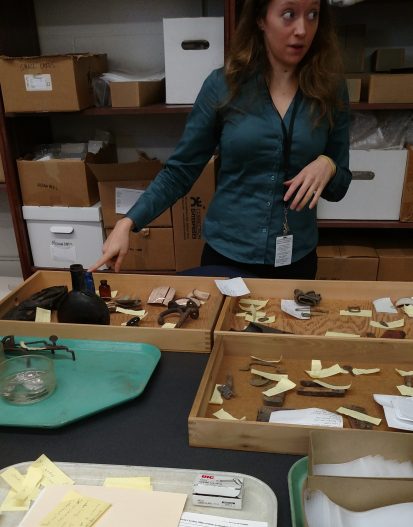
Our guide showing us some artifacts from a historical tavern site. And I was “that question guy” that messes up time schedules.
Last Friday I had the opportunity to attend the North Carolina Literary and Historical Association 116th meeting and the Federation of North Carolina Historical Societies 41st meeting that was held- well, all over Raleigh with the the deputy secretary of the N.C. Department of Natural and Cultural Resources and director of the Office of Archives, History and Parks, Dr. Kevin Cherry. First we toured behind the scenes at the NC Archives and viewed singular artifacts such as Colonel Isaac Avery’s note to his father that he wrote as he lay dying on the Gettysburg battlefield after being shot from his horse. We also gazed upon the log book for the CSS Shenandoah, the ship that fired the last shot of the American Civil War. We also saw John Adam’s ‘Thoughts on Government’, a letter he wrote in 1776 in his efficient handwriting to the delegates of North Carolina.
From there we walked several blocks to the spacious and advanced Office of State Archaeology Research Center (OSARC). There, I really geeked out because archaeology was what I was doing before I went into librarianship. I am sure that Emily McDowell, the OSARC lab assistant who gave us the tour, was annoyed at my many questions. In the storage facility we learned that the artifacts in the banana boxes were not yet curated and I glimpsed an enigmatic box with ‘Mystery’ written in marker on it. We also learned how not to conserve Native American pottery when were shown a pot covered in masking tape.
Our next stop was the North Carolina Museum of Natural Sciences and a tour behind the scenes with the chief of research and collections, Dr. Jason Cryon. There, we delved into the paleontology storage area where I saw giant femurs of sauropods still in their plaster from the field. We also got to see countless specimens of birds and mammals that are a part of their research collection. It brought back fond memories of when I was a biology major, before I switched to anthropology.
Afterwards, we retired to the Doubletree Inn on Hillsborough Street to watch various awards being presented and then heard speakers on Sir Walter Raleigh (it was actually about the pageant in Raleigh in 1920 to celebrate the 300th anniversary of his death) and another on George Washington’s Southern tour in 1920.
A repeated theme of the gathering was to support your scientific and cultural institutions through visits and donations. Many are afraid that money, especially federal money, may dry up in the near future. So support them with your feet and your dollars to keep them doing great things!
